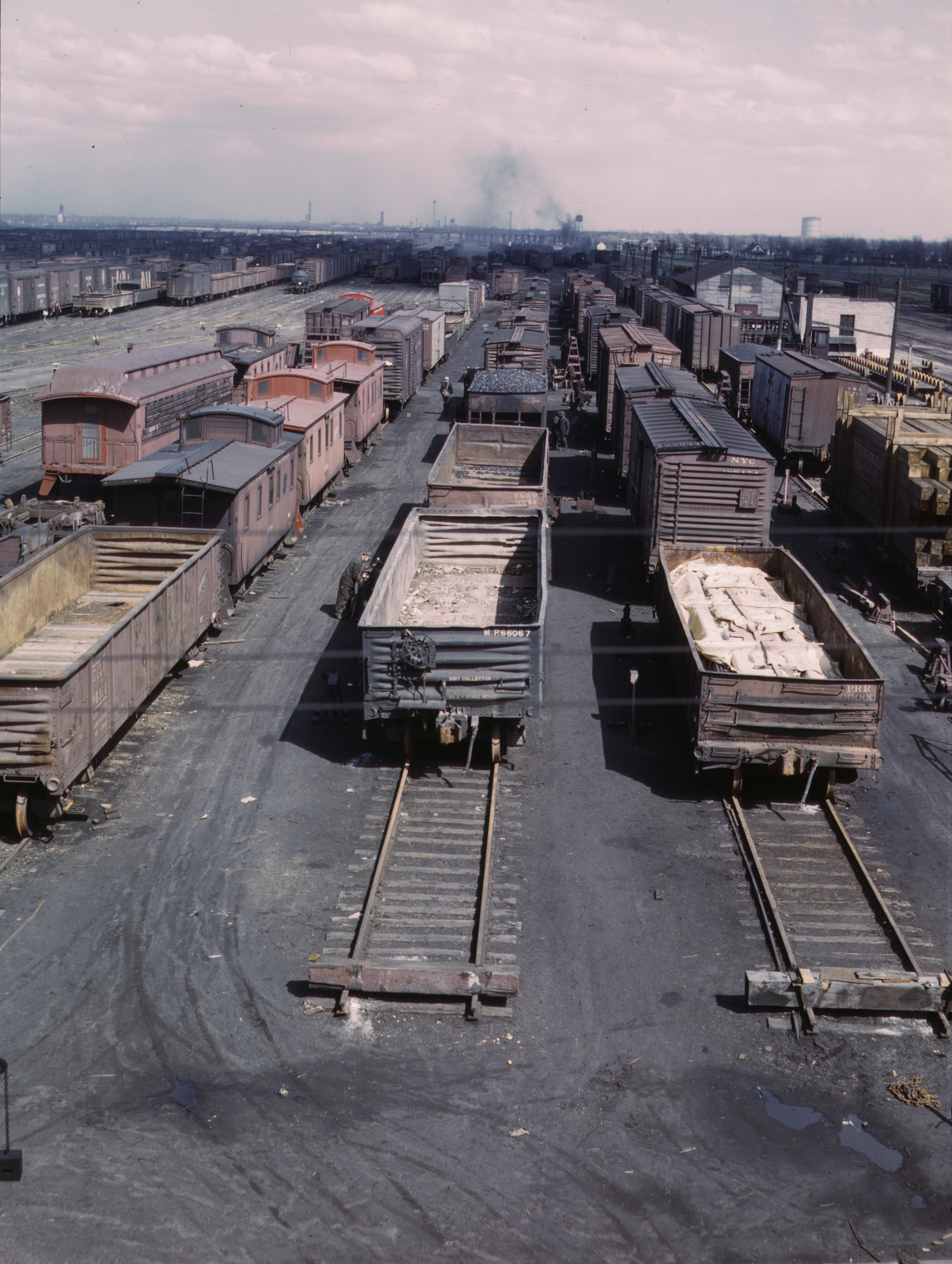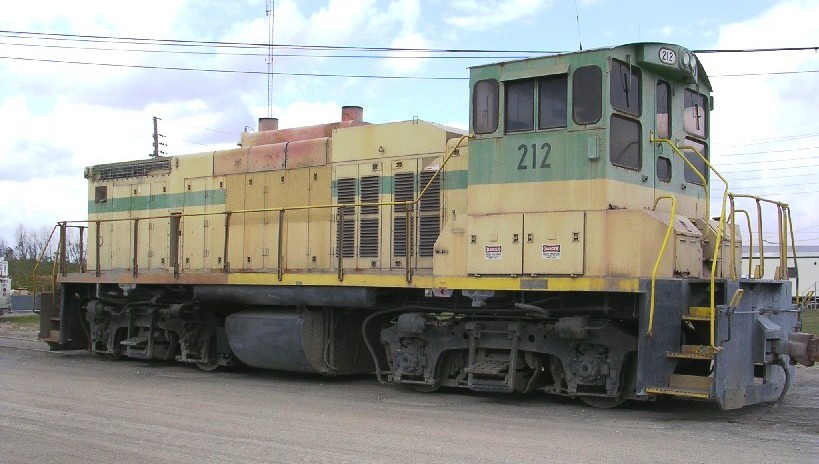|
RIP Track
A RIP track, short for ''repair in place'' track, (also known as a "cripple track" in slang terms) is a designated track, or tracks, in a rail yard or a siding along a section of a main rail line where locomotives and/or railroad cars can be placed for minor repairs. A RIP tracks allows for minor repairs to be done without removing the units from service and sometimes allows for these repairs to be done without removing a freight load from the car. In some yards, a RIP track may be used for staging locomotives or damaged cars for major repairs and some rail yards may have more than one RIP track to serve both functions. Usage When it is discovered that an unloaded freight car requires repairs, they are normally sent to the repair shops. However, mechanical defects often do not show up, or are not discovered, until after a freight car has been loaded and is in transit. Obviously, it would be expensive and entail considerable delay to have to unload a defective car and transfer t ... [...More Info...] [...Related Items...] OR: [Wikipedia] [Google] [Baidu] |
Rail Tracks
A railway track (British English and UIC terminology) or railroad track (American English), also known as permanent way or simply track, is the structure on a railway or railroad consisting of the rails, fasteners, railroad ties (sleepers, British English) and ballast (or slab track), plus the underlying subgrade. It enables trains to move by providing a dependable surface for their wheels to roll upon. Early tracks were constructed with wooden or cast iron rails, and wooden or stone sleepers; since the 1870s, rails have almost universally been made from steel. Historical development The first railway in Britain was the Wollaton Wagonway, built in 1603 between Wollaton and Strelley in Nottinghamshire. It used wooden rails and was the first of around 50 wooden-railed tramways built over the next 164 years. These early wooden tramways typically used rails of oak or beech, attached to wooden sleepers with iron or wooden nails. Gravel or small stones were packed around the s ... [...More Info...] [...Related Items...] OR: [Wikipedia] [Google] [Baidu] |
Rail Yard
A rail yard, railway yard, railroad yard (US) or simply yard, is a series of tracks in a rail network for storing, sorting, or loading and unloading rail vehicles and locomotives. Yards have many tracks in parallel for keeping rolling stock or unused locomotives stored off the main line, so that they do not obstruct the flow of traffic. Cars or wagons are moved around by specially designed yard switchers (US) or shunters, a type of locomotive. Cars or wagons in a yard may be sorted by numerous categories, including railway company, loaded or unloaded, destination, car type, or whether they need repairs. Yards are normally built where there is a need to store rail vehicles while they are not being loaded or unloaded, or are waiting to be assembled into trains. Large yards may have a tower to control operations. Many yards are located at strategic points on a main line. Main-line yards are often composed of an up yard and a down yard, linked to the associated direction of travel. ... [...More Info...] [...Related Items...] OR: [Wikipedia] [Google] [Baidu] |
Siding (rail)
A siding, in rail terminology, is a low-speed track section distinct from a running line or through route such as a main line, branch line, or spur. It may connect to through track or to other sidings at either end. Sidings often have lighter rails, meant for lower speed or less heavy traffic, and few, if any, signals. Sidings connected at both ends to a running line are commonly known as loops; those not so connected may be referred to as single-ended or dead-end sidings, or (if short) stubs. Functions Sidings may be used for marshalling (classifying), stabling, storing, loading, and unloading vehicles. Common sidings store stationary rolling stock, especially for loading and unloading. Industrial sidings (also known as spurs) go to factories, mines, quarries, wharves, warehouses, some of them are essentially links to industrial railways. Such sidings can sometimes be found at stations for public use; in American usage these are referred to as team tracks (after the use ... [...More Info...] [...Related Items...] OR: [Wikipedia] [Google] [Baidu] |
Locomotive
A locomotive or engine is a rail transport vehicle that provides the Power (physics), motive power for a train. If a locomotive is capable of carrying a payload, it is usually rather referred to as a multiple unit, Motor coach (rail), motor coach, railcar or power car; the use of these self-propelled vehicles is increasingly common for passenger trains, but rare for freight (see CargoSprinter). Traditionally, locomotives pulled trains from the front. However, Push-pull train, push-pull operation has become common, where the train may have a locomotive (or locomotives) at the front, at the rear, or at each end. Most recently railroads have begun adopting DPU or distributed power. The front may have one or two locomotives followed by a mid-train locomotive that is controlled remotely from the lead unit. __TOC__ Etymology The word ''locomotive'' originates from the Latin language, Latin 'from a place', Ablative case, ablative of 'place', and the Medieval Latin 'causing mot ... [...More Info...] [...Related Items...] OR: [Wikipedia] [Google] [Baidu] |
Railroad Car
A railroad car, railcar (American and Canadian English), railway wagon, railway carriage, railway truck, railwagon, railcarriage or railtruck (British English and UIC), also called a train car, train wagon, train carriage or train truck, is a vehicle used for the carrying of cargo or passengers on a rail transport system (a railroad/railway). Such cars, when coupled together and hauled by one or more locomotives, form a train. Alternatively, some passenger cars are self-propelled in which case they may be either single railcars or make up multiple units. The term "car" is commonly used by itself in American English when a rail context is implicit. Indian English sometimes uses "bogie" in the same manner, though the term has other meanings in other variants of English. In American English, "railcar" is a generic term for a railway vehicle; in other countries "railcar" refers specifically to a self-propelled, powered, railway vehicle. Although some cars exist for the railroa ... [...More Info...] [...Related Items...] OR: [Wikipedia] [Google] [Baidu] |
Switcher
A switcher, shunter, yard pilot, switch engine, yard goat, or shifter is a small railroad locomotive used for manoeuvring railroad cars inside a rail yard in a process known as ''switching'' (US) or ''shunting'' (UK). Switchers are not intended for moving trains over long distances but rather for assembling trains in order for another locomotive to take over. They do this in classification yards (Great Britain: ''marshalling yards''). Switchers may also make short transfer runs and even be the only motive power on branch lines and switching and terminal railroads. The term can also be used to describe the workers operating these engines or engaged in directing shunting operations. Switching locomotives may be purpose-built engines, but may also be downgraded main-line engines, or simply main-line engines assigned to switching. Switchers can also be used on short excursion train rides. The typical switcher is optimised for its job, being relatively low-powered but with a high ... [...More Info...] [...Related Items...] OR: [Wikipedia] [Google] [Baidu] |
Unstoppable (2010 Film)
''Unstoppable'' is a 2010 American disaster action thriller film directed and produced by Tony Scott and starring Denzel Washington and Chris Pine. It is based on the real-life CSX 8888 incident, telling the story of a runaway freight train and the two men who attempt to stop it. It was the last film Tony Scott directed before his death in 2012. The film was released in the United States and Canada on November 12, 2010. It received generally positive reviews from critics and grossed $167 million against a production budget between $85–100 million. It was nominated for an Oscar for Best Sound Editing at the 83rd Academy Awards, but lost to ''Inception''. Plot While two yard hostlers are moving a mixed-freight Allegheny and West Virginia Railroad (AWVR) train at Fuller Yard in northern Pennsylvania, Dewey, the engineer, realizes that a trailing-point switch ahead is not correctly aligned and leaves the cab of lead locomotive 777 to change it, after setting the throttle to ... [...More Info...] [...Related Items...] OR: [Wikipedia] [Google] [Baidu] |
About '', one of the future constructions in English grammar
*
{{disambiguation ...
About may refer to: * About (surname) * About.com, an online source for original information and advice * about.me, a personal web hosting service * ''abOUT'', a Canadian LGBT online magazine * ''About Magazine'', a Texas-based digital platform covering LGBT news * About URI scheme, an internal URI scheme * About box, a dialog box that displays information related to a computer software * About equal sign, symbol used to indicate values are approximately equal See also * About Face (other) * About Last Night (other) * About Time (other) * About us (other) * About You (other) * ''about to The ''going-to'' future is a grammatical construction used in English to refer to various types of future occurrences. It is made using appropriate forms of the expression ''to be going to''.Fleischman, Suzanne, ''The Future in Thought and Langua ... [...More Info...] [...Related Items...] OR: [Wikipedia] [Google] [Baidu] |


.jpg)
.jpg)



.jpg)